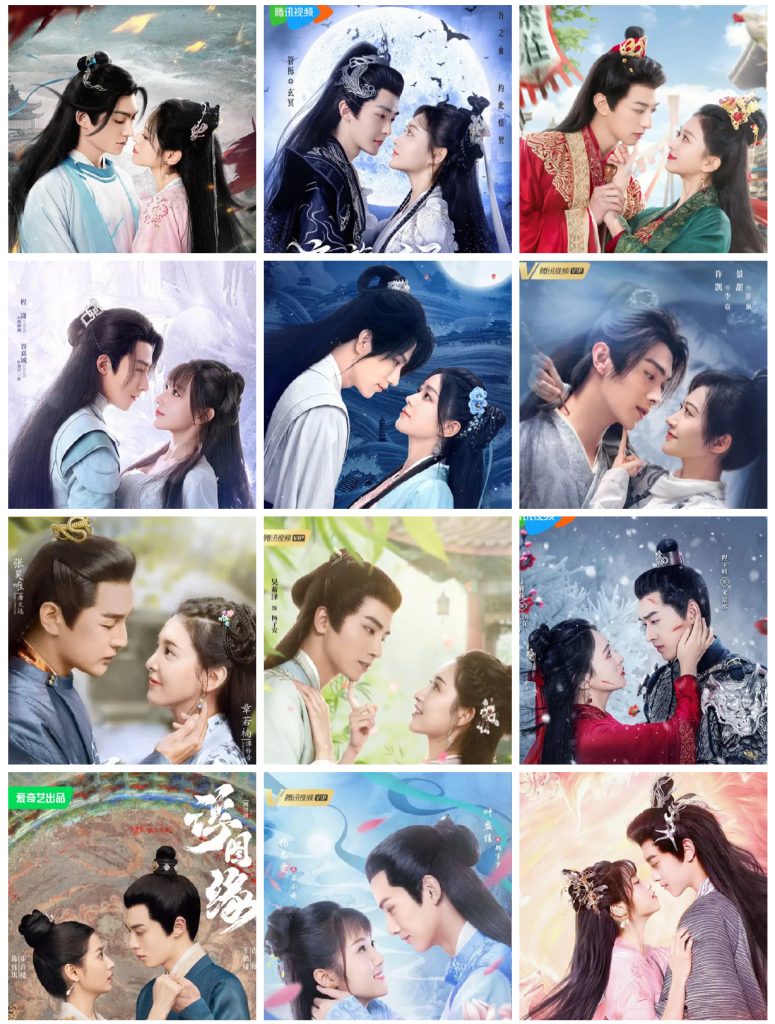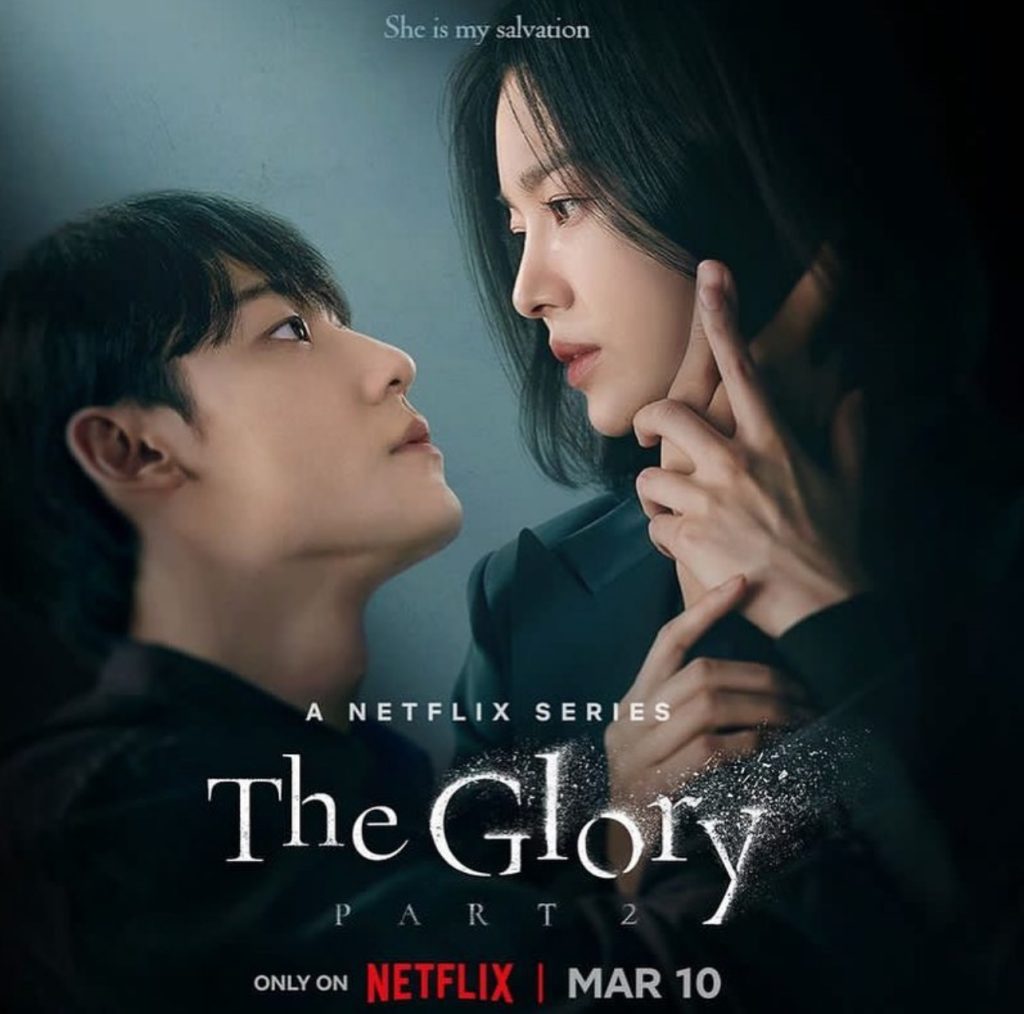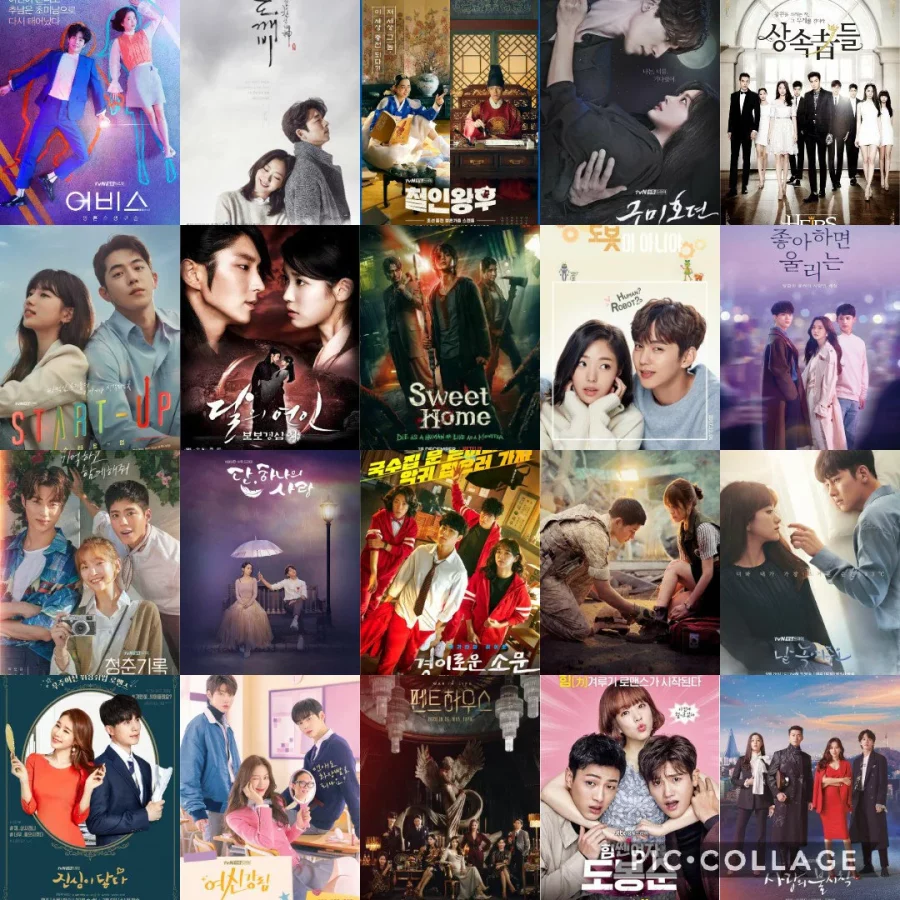The concept of cultural industry, proposed by Adorno and Horkheimer, explains how cultural products, like TV shows, are mass-produced to ensure profitability. In this process, standardization plays a key role—content is produced following set formulas to appeal to a broad audience. This is particularly visible in Chinese costume dramas and Korean idol dramas, where visual styles and storylines have become highly standardized.
Standardization of Visual Style in Chinese Costume Dramas

Chinese costume dramas are visually impressive, but when we take a closer look, many of them share the same aesthetic formula.
- Repetitive Scenery: Whether the plot is about palace intrigue or fantasy romance, these shows typically feature similar scenic elements: mist-covered mountains, soft moonlight, and poetic backgrounds. These dreamy, romantic visuals create a certain mood that audiences have come to expect, but when repeated across different shows, they become predictable.
- Character Appearance: Male leads are often shown with long hair, wearing elaborate robes, while female characters are dressed in pastel-colored flowing dresses. This visual uniformity isn’t necessarily tied to historical accuracy but is designed to appeal to modern ideas of beauty and romance. The repeated use of these looks across multiple series makes the shows feel visually indistinguishable.
Producers stick to this visual template because it’s proven to work. By giving viewers what they already like, they reduce the risk of failure. This approach prioritizes commercial success over innovation.
Standardization of Plot and Characters in Korean Idol Dramas

- Character Stereotypes: The male protagonist is often a wealthy, emotionally distant figure, while the female lead is a sweet, innocent girl who softens his tough exterior. This character dynamic has been recycled in countless Korean dramas, from romantic comedies to melodramas, with very little variation.
- Predictable Storylines: Most Korean idol dramas follow a predictable pattern: there’s a love triangle, a period of misunderstanding or separation, and finally, a happy reconciliation. Despite minor differences in setting or secondary plotlines, the core narrative remains the same, and viewers can usually guess how the story will unfold.
The success of these character and plot structures ensures that producers keep using them. These formulas are emotionally engaging and reliably draw in viewers, which guarantees high ratings and steady profits.
Conclusion
Both Chinese costume dramas and Korean idol dramas reflect the impact of standardization in the cultural industry. By recycling visual styles, characters, and storylines, producers ensure that their shows meet audience expectations and minimize financial risk. While this approach leads to commercial success, it also limits creativity and makes the content feel repetitive. In the end, both types of dramas often end up looking and feeling the same, prioritizing familiarity over artistic innovation.


hhhh I love these TV dramas too
Hi JIA CHENG. your blog is excellent in clearly and methodically analyzing the cultural-industrial theory in Chinese and Korean TV dramas. You have successfully demonstrated how Chinese costume dramas and Korean idol dramas follow the established formula for profitability through the standardization of visual styles and narrative patterns. I particularly liked your observations of visual details, such as ‘misty mountains’ and ‘soft moonlight’ in Chinese costume dramas, which are not only vivid but also make the theoretical analysis more concrete and relevant. Similarly, your summary of Korean drama characters and plot patterns is very precise. The combination of the ‘rich but aloof male lead’ and the ‘simple female lead’ that you mentioned is indeed a classic formula that has been widely used in Korean dramas. The repeated use of this formula, as you say, ensures emotional appeal and commercial success. However, what I think can be further explored is: behind this standardization, is there also a deeper response to the needs of the audience? For example, do these formulaic contents map the psychological demands and social values of viewers in different cultures? Moreover, while standardization limits innovation, might it also lay the groundwork for the creation of entirely new types of cultural products? These questions might make for a more comprehensive discussion. Overall, your blog demonstrates a deep understanding of the theory of the cultural industry while incorporating specific examples of Chinese and Korean TV dramas with both theoretical depth and practical relevance. I gained a lot of inspiration from your analysis!